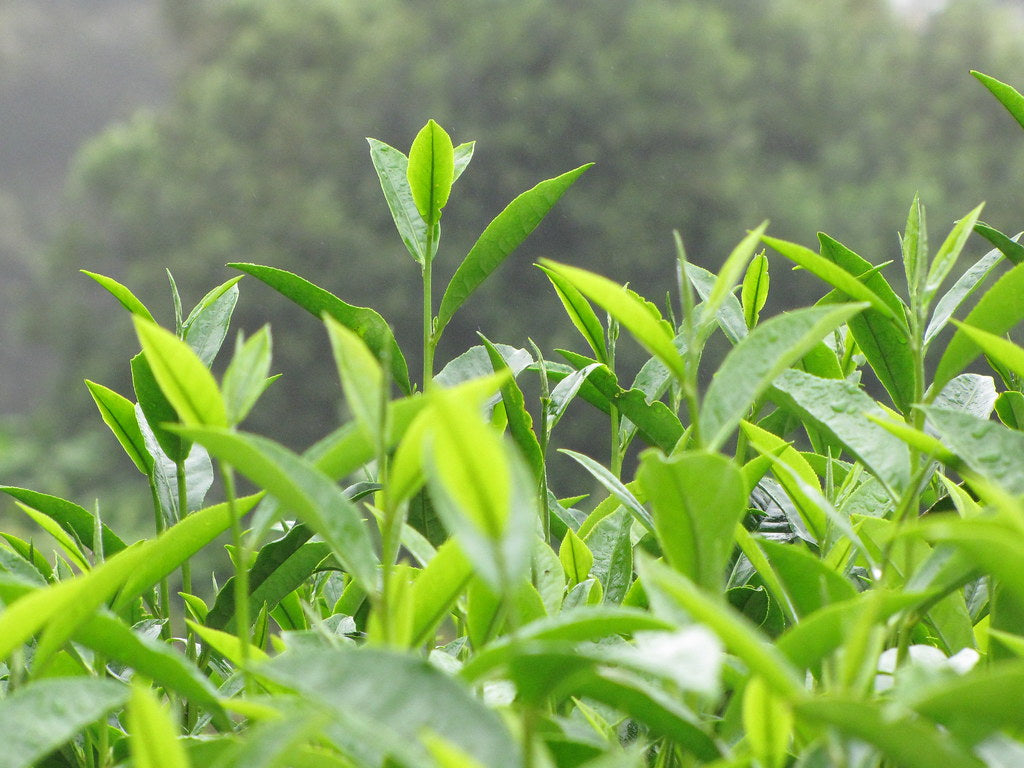
Exploring the Complexities of Tea: A Tea Primer
|
|
Time to read 4 min
|
|
Time to read 4 min
Here at English Tealeaves, we distinguish between what we call “real” tea and herbal & fruit teas. What we mean is that real tea must be made from the leaves of the tea plant, Camellia sinensis. From those leaves, we get black tea, green tea, white tea, oolong tea and pu-erh tea.
If a beverage is not made with leaves from the tea plant, it is more properly called an infusion or tisane. This would include all of our fruit and/or herbal selections. That will be a subject for a future post. For now, let’s see how we can get so many different tasting teas from just one basic plant.
All wine comes from grapes but one of the differences in the taste of the wine has to do with which variety of grape is used. It is similar in the tea world. All tea comes from the Camellia sinensis plant but there are different varieties. The two main varieties are Camellia Sinensis Sinensis and Camellia Sinensis Assamica. The Sinensis variety is what is generally found in China. It has smaller leaves than the Assamica variety and has a better tolerance to cold. The Assamica variety is native to the Assam region of India. It has larger leaves but is more sensitive to cold.
To make it even more interesting, there are also “cultivars,” which has been shortened from “cultivated variety.” These are mostly created through human intervention by hybridization. It might be done to create a plant with increased yield, better hardiness, a unique aroma and/or taste or some other specific trait. There are said to be thousands of different cultivars of the tea plant. Although certain cultivars may be better suited to making a particular type of tea, it is possible to make any kind of tea from any cultivar.
The concept of terroir may be better known to wine connoisseurs, but it is equally applicable to the tea world. Merriam-Webster defines it as “the combination of factors including soil, climate, and sunlight that gives wine grapes their distinctive character. Swap out “wine grapes” for “tea leaves” and you get the idea. All of these factors can have an effect on the taste of the tea in your cup. We have about 20 different black teas and they all taste unique. Compare a cup of our delightfully complex Golden Red from China with our 1st flush Darjeeling from India and you will see what we mean. Or, if you are a green tea drinker, try our Japanese Sencha Ryoku alongside a cup of our Chinese Gunpowder. Both are green teas but they have very distinctive flavors and aromas.
How the tea is handled after harvesting is what determines if it is turned into a black, green, oolong or other type of tea. One of the main differences is the presence or absence of oxidation as well as the degree of oxidation of the leaves. If you have ever cut an apple and left it unprotected on your counter, you have seen oxidation in action as it turns brown. You may frown on that with your apple, but it is an essential step in the making of some teas.
After the tea leaf in plucked, it is manipulated and rolled. This opens up the cells in the tea leaf, exposing an enzyme to the oxygen in the air, causing oxidation. How much oxidation that is allowed to happen is a major determinant of what type of tea will be produced.
Black teas are considered “fully oxidized” and that can be seen in the darker color, aroma and flavor. Green teas are “unoxidized” as the enzyme is inactivated by heat to prevent the oxidation from occurring. Oolong teas are “partially oxidized” although there is a great difference between those that are only lightly oxidized (called greenish or light oolongs) and those that are more heavily oxidized (called dark oolongs).
White teas are the least processed teas available. There is nothing done to promote the oxidation as with black teas. There is also nothing done to arrest the oxidation as with green teas. They may be some natural oxidation that occurs just from the handling of the tea but it is minor in amount.
Pu-erh teas are quite different teas in that the traditional pu-erh undergoes an aging and fermentation process over 10-50 years.
Companies often make their own proprietary blends. They might blend black teas from different countries or even blend different types of tea. This will produce great flavor variation. Examples include English Breakfast, Irish Breakfast and Scottish Breakfast. Some blends are known by the brand name – PG Tips, Tetley Tea and so forth.
Many tea drinkers, especially American tea drinkers, love flavored teas. This means that some type of flavor is added to produce a desired taste. Our most popular flavored teas is Snowflake, a black tea that has been flavored with coconut and almond. Flavored teas are produced by spraying the tea leaves with essential oils that have been distilled from the plant with the desired flavor. There may also be “inclusions” added such as dried fruit or flowers. These, however, are more for your eyes and nose than the actual flavor they might add.
Scenting teas is technically different than flavoring teas. Scented teas are created by being in close proximity to strong flavors. Jasmine teas are created by allowing the tea leaves to absorb the aroma and flavor from fresh jasmine blossoms. Lapsang Souchong gets its smoky characteristic from being dried over pine wood fires.
Who knew there was so much to such a simple beverage? In this post, we have really only scratched the surface. Stay tuned for more posts and sign up for our Tea-mail newsletter to be notified of our next in-house educational and tea tasting event.

